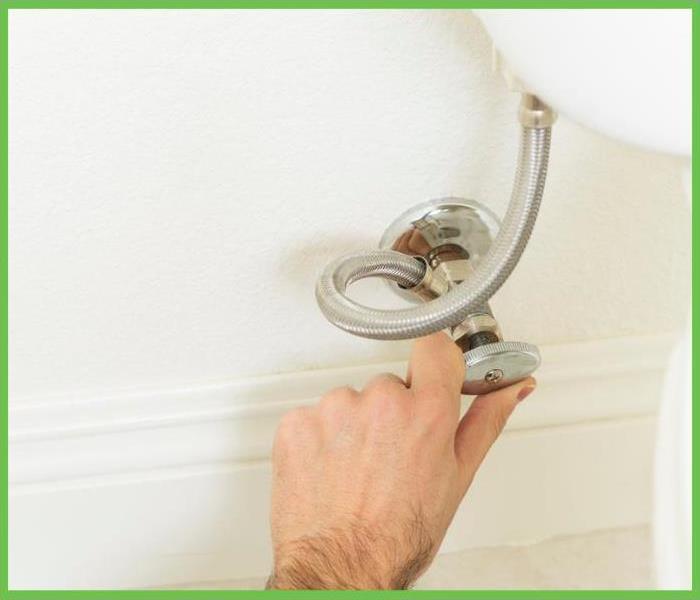What To Do When Your Toilet Overflows
7/18/2022 (Permalink)
3 Easy Steps: What to Do When Your Toilet Overflows
What to Do When Your Toilet Starts Overflowing
Picture this: Just as you are leaving the bathroom, you hear the undeniable, dreaded sound of water hitting the floor. Looking back, you see the toilet overflowing! You turn off the water—but what do you do now? Any person’s natural reaction would be to panic, but by knowing what to do in this scenario, you can protect yourself and your home or office while also reducing any feelings of fear and anguish that may arise.
When Handling a Toilet Overflow:
1.Cut off the toilet’s water supply
By finding the valve on the wall behind the toilet, and turning it clockwise, you can cut off the toilet's water supply. These can be found behind the toilet and looks like a silver fixture coming out of the wall with a knob in the front. If there is no valve behind the toilet, take the top off the tank and lift the float ball or cup high enough to stop the water from running. Then shut off the water supply to the house with the main valve or knob located near the water heater. By turning off the water, you prevent any additional fluids and contamination from exiting your sewage system (as well as reducing any potential odors that may occur). If the water is severely contaminated upon examination, avoid the area, turn off the HVAC system and contact our expert staff.
Did you have an overflowing toilet?
Call 949-474-7776 now for a free consultation from a restoration specialist near you.
2. Clean Up the Water and Waste from the Floor
Water soaks fast into walls and cabinets, and waste spreads germs and causes mold. The longer the contaminated water remains on your bathroom floor, the more harm it can do. Mop up any remaining water and waste as soon as possible to avoid mold growth and more damage. The quality of your flooring and other amenities in the affected area will be preserved by removing any water that escapes from your drainage system. While appropriate ventilation will aid in the evaporation of the water, depending on the amount of water and the severity, you may want expert assistance.
3. Disinfect to Avoid Bacterial Growth
Finally, the area should be disinfected and sanitized to ensure no bacterial growth occurs and all surfaces are safe for contact and use. Start by cleaning everything with soap and warm water. After that, disinfect everything by mixing one cup of bleach with a gallon of water and wiping it down. Not only will this eliminate mold and germs, but it will also aid in the removal of any odor.
Without a doubt, everyone wants to avoid a toilet overflow. They must be dealt with immediately for the safety of your bathroom and your health. SERVPRO IRVINE is prepared to tackle these circumstances by removing any moisture and odors using our modern equipment and techniques while also implementing our goal of returning your area to its previously undamaged state. With our 24/7 open guarantee, we will ensure a rapid and ready team to tackle the job and return your bathroom to its functional, clean state. For more information or help navigating a flood situation, reach out now and we would love to help you!



 24/7 Emergency Service
24/7 Emergency Service
